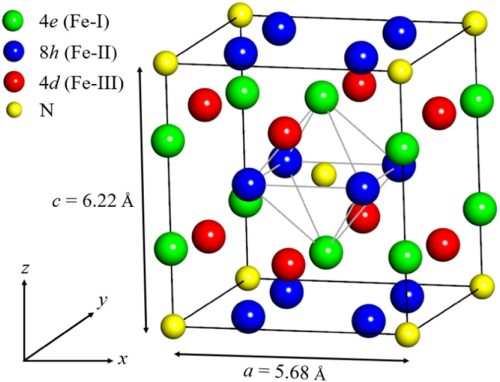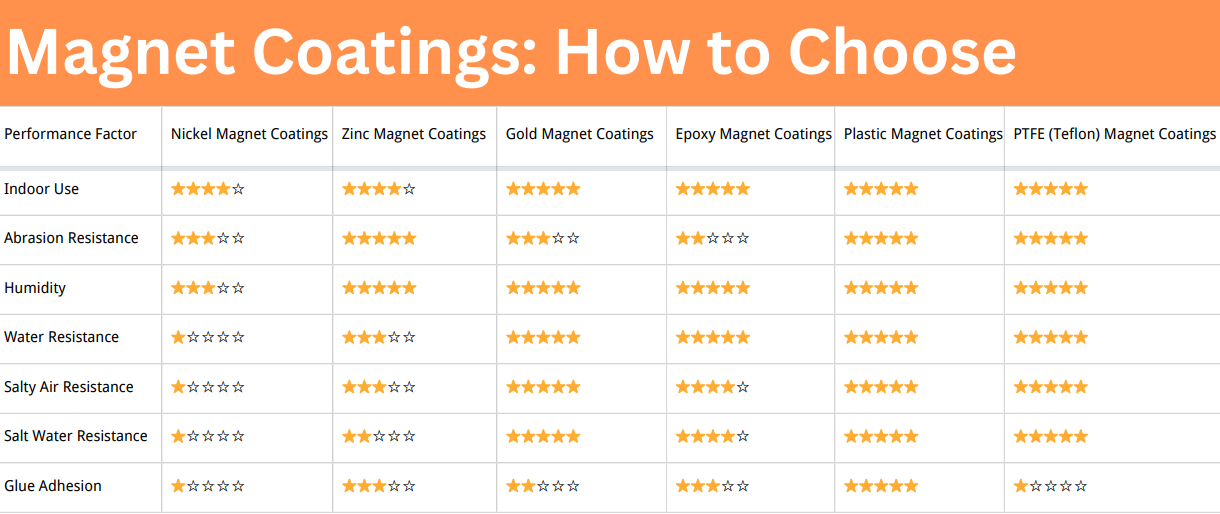Iron Nitride Permanent Magnets: A Comprehensive Guide
Iron nitride permanent magnets are an emerging alternative to traditional rare-earth magnets, offering unique advantages in terms of performance and sustainability. With applications ranging from electric motors to consumer electronics, these magnets are gaining attention for their promising properties. This guide discusses their composition, properties, manufacturing process, and how they compare to the widely used neodymium (NdFeB) magnets.
What Is an Iron Nitride Magnet?
Iron nitride magnets are permanent magnets primarily composed of iron (Fe) and nitrogen (N). Their exceptional magnetic properties stem from the ferromagnetic Fe16N2 phase, which has a remarkably high saturation magnetization. These magnets are particularly notable for their independence from rare-earth materials, such as neodymium or dysprosium, making them a cost-effective and environmentally friendly choice for many industries.
Composition and Structure
The unique properties of iron nitride magnets are attributed to the Fe16N2 phase, which exhibits a tetragonal crystal structure. This structure arises from nitrogen atoms occupying interstitial sites within the iron lattice. This arrangement enhances the magnetic coupling between iron atoms, resulting in a high saturation magnetization.
 [1]
[1]
Iron nitride magnets consist almost entirely of iron and nitrogen, both of which are abundant and inexpensive. Unlike neodymium magnets, they do not rely on rare-earth elements. However, the Fe16N2 phase can be unstable at room temperature, posing a challenge for industrial applications. Researchers are actively developing methods to stabilize this phase and maximize its magnetic performance.
Properties and Performance
Iron nitride magnets boast several remarkable properties.
Their saturation magnetization is higher than most other magnets, with the Fe16N2 phase theoretically reaching approximately 2.4 Tesla, surpassing even neodymium magnets. Because they are composed of common materials like iron and nitrogen, these magnets are significantly cheaper to produce. Additionally, their reliance on abundant resources makes them an environmentally sustainable choice, avoiding the ecological and geopolitical issues associated with rare-earth mining.
Despite these advantages, iron nitride magnets face challenges such as lower coercivity (the ability to resist demagnetization) compared to neodymium magnets. Furthermore, their manufacturing processes are not yet fully optimized, which limits their widespread adoption. As research progresses, these limitations are expected to diminish.
Manufacturing
The production of iron nitride magnets is centered on creating and stabilizing the Fe16N2 phase. The process typically involves the following steps:
- Nitrogenation: High-purity iron is infused with nitrogen under controlled conditions, using methods such as gas nitriding or plasma nitriding. This step ensures sufficient nitrogen diffusion to form the Fe16N2 phase.
- Phase Stabilization: Maintaining the Fe16N2 phase requires precise temperature control during synthesis. Techniques like rapid cooling or specific annealing processes help stabilize this phase.
- Powder Metallurgy: For bulk magnet production, the material is converted into fine powders, compacted, and sintered into desired shapes. Binding agents may be used to enhance the mechanical strength of the magnets.
- Magnetic Alignment and Surface Finishing: During manufacturing, the magnetic particles are aligned in an external field to optimize performance. Surface coatings can be applied to improve durability and corrosion resistance.
Comparison with Neodymium Magnets
When comparing iron nitride magnets to neodymium magnets, there are several key differences.
- Iron nitride magnets offer high magnetic strength, with potentially greater saturation magnetization than neodymium magnets.
- However, their coercivity is lower, meaning they are less resistant to demagnetization.
- In terms of cost, iron nitride magnets are far more affordable, as they use only iron and nitrogen, both abundant and inexpensive materials. Neodymium magnets, by contrast, rely on rare-earth elements, which are costly to mine and refine.
- Additionally, the production of iron nitride magnets has a lower environmental impact, avoiding the ecological damage associated with rare-earth mining.
- Neodymium magnets currently benefit from well-established manufacturing processes, making them easier to produce at scale. Iron nitride magnets, on the other hand, are still in the early stages of industrial production, which limits their availability.
- Both types of magnets require surface coatings to prevent corrosion and ensure longevity.
|
Parameter |
Iron Nitride Magnets |
Neodymium Magnets |
|
Saturation Magnetization |
~160 emu/g |
~128-160 emu/g |
|
Coercivity |
Lower (prone to demagnetization) |
High (resistant to demagnetization) |
|
Material Cost |
Low (Iron, Nitrogen) |
High (Rare Earth Elements) |
|
Environmental Impact |
Low (No rare-earth mining) |
High (Ecological damage from mining) |
|
Manufacturing Scalability |
Limited (Emerging production) |
High (Established processes) |
|
Corrosion Resistance |
Requires surface coating |
Requires surface coating |
Applications and Potential
Iron nitride magnets have the potential to revolutionize various industries. Their high magnetic strength and affordability make them an excellent choice for:
- Electric Motors and Generators: Compact and efficient designs benefit from the high saturation magnetization of iron nitride magnets.
- Consumer Electronics: Their low cost and sustainable production processes make them ideal for devices like speakers and headphones.
- Sustainability Initiatives: Companies aiming to reduce dependence on rare-earth elements may adopt iron nitride magnets as a greener alternative.
Conclusion
Iron nitride permanent magnets represent a promising solution to the challenges posed by rare-earth magnets. While challenges like lower coercivity and limited production capabilities remain, ongoing research is paving the way for their broader adoption. As manufacturing methods improve, iron nitride magnets may well rival neodymium magnets in performance-critical applications, offering a sustainable and cost-effective option for the future. For more advanced magnet materials, please check Stanford Magnets.
Reference:
[1] Han, Myung & Kim, Won June & Lee, Eok & Kim, Hyungjun & Lebègue, Sébastien & Kozak, John. (2019). Theoretical study of the microscopic origin of magnetocrystalline anisotropy in Fe16N2 and its alloys: comparison with the other L10 alloys. Journal of Physics: Condensed Matter. 32. 10.1088/1361-648X/ab422c.














